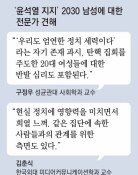50,000 won bills disappear again as interest rates drop
50,000 won bills disappear again as interest rates drop
Posted July. 18, 2024 07:38,
Updated July. 18, 2024 07:38

The redemption rate of the 50,000 won note has dropped significantly as market interest rates have fallen.
According to the “Money Supply and Demand Data” that Democratic Party Rep. Lee Jong-ki obtained from the Bank of Korea on Wednesday, the issuance of 50,000 won bills was about 12 trillion won in the first half of this year, while the amount redeemed was 5.8 trillion won. This puts the redemption rate, which is the ratio of redemptions to issuance, at 49.1 percent. This marks a sharp drop of 28.7 percentage points from the first half of last year when the redemption rate was 77.8 percent.
When the Bank of Korea issues banknotes, they circulate in the market and are eventually deposited in financial institutions through savings deposits or tax payments. A decrease in the redemption rate indicates that less money is in circulation. When market interest rates rise, the opportunity cost of holding money increases, leading to a higher exchange rate as more people save. Conversely, when interest rates fall, the redemption rate declines. For instance, as interest rates remained low during the pandemic and financial markets became more uncertain, the redemption rate fell to the 10-20% range. It only recovered to the 50-60% range as interest rates began to rise in 2022 and beyond.
The Bank of Korea also attributed the decline in the redemption rate in the first half of this year to lower market interest rates. The average deposit rate at banks, which had risen to 3.99 percent in November last year amid prolonged high interest rates, fell to 3.55 percent in May this year.
이동훈 기자 dhlee@donga.com






